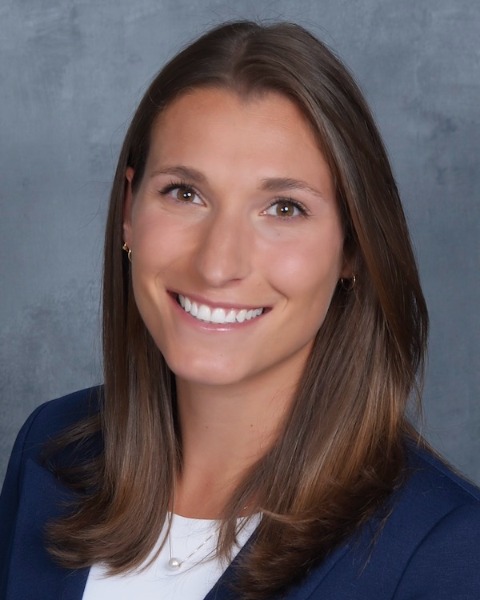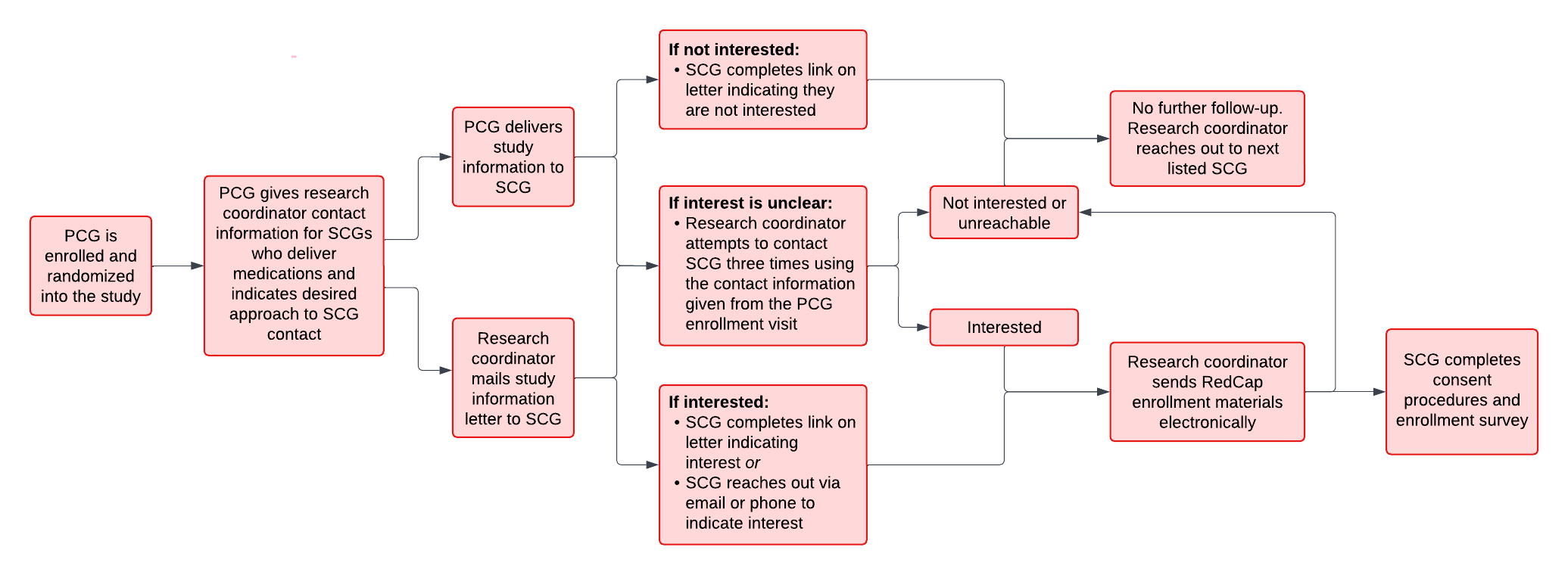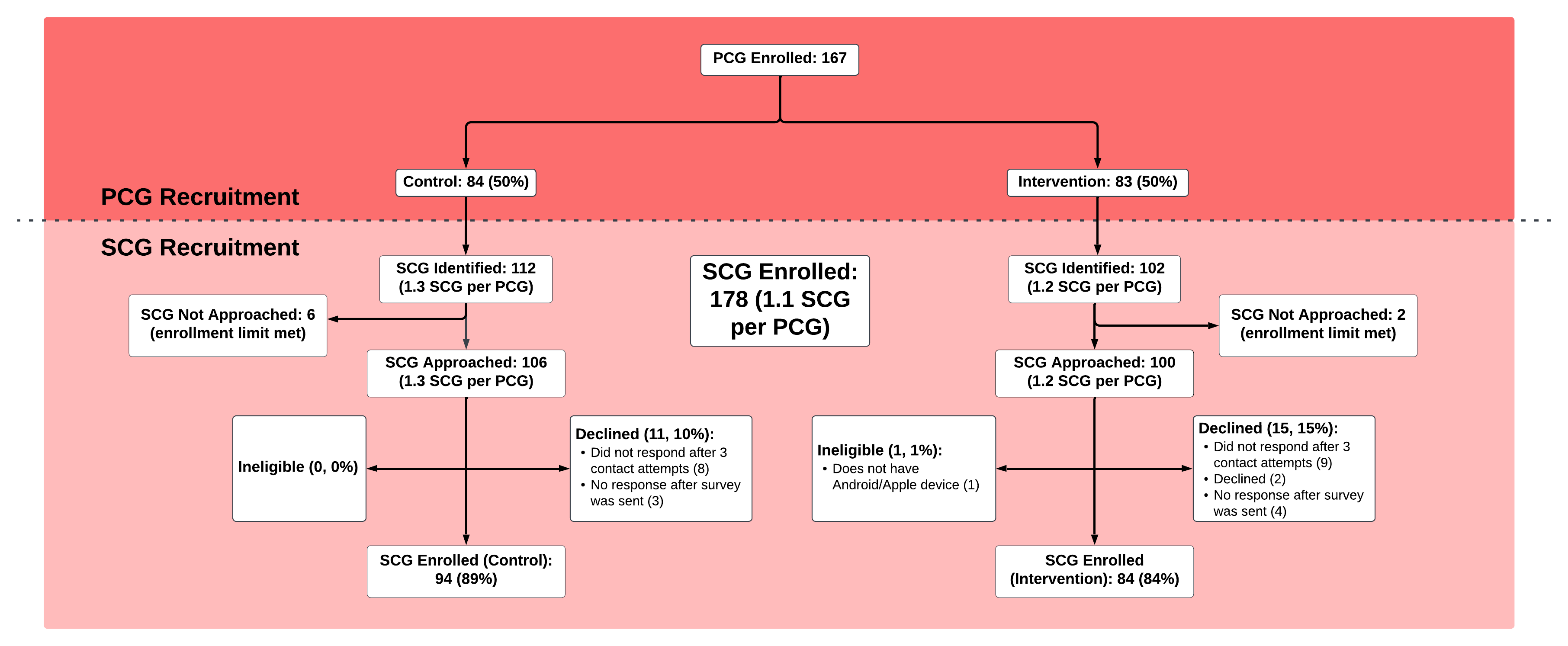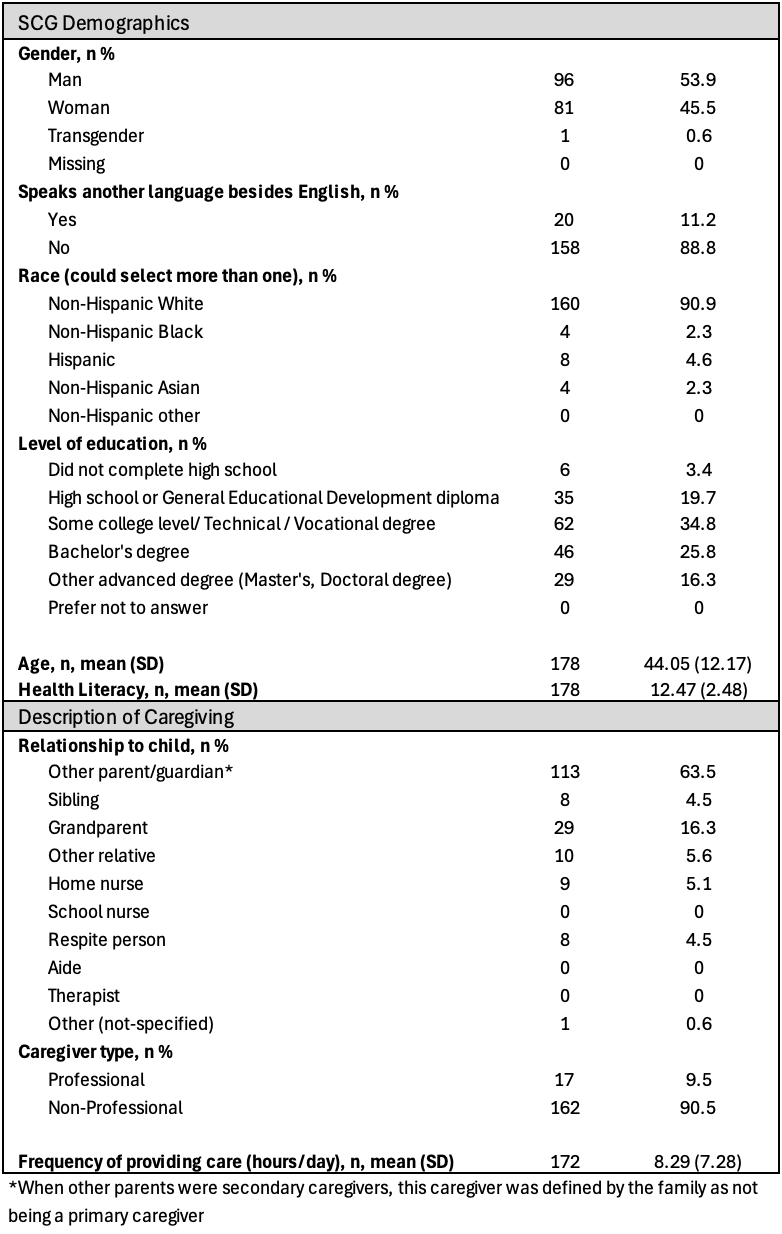Children with Chronic Conditions 4
Session: Children with Chronic Conditions 4
474 - Engaging Secondary Caregivers in Research for Children with Medical Complexity
Monday, April 28, 2025
7:00am - 9:15am HST
Publication Number: 474.4773
Makenzie B. Morgen, UW-Health, Madison, WI, United States; Nicole Werner, Indiana University School of Public Health Bloomington, Bloomington, IN, United States; Casey O'Hare, University of Wisconsin School of Medicine and Public Health, Madison, WI, United States; Sophie J. Kooiman, University of Wisconsin School of Medicine and Public Health, Madison, WI, United States; James A. Feinstein, University of Colorado School of Medicine, Englewood, CO, United States; Michelle Chui, University of Wisconsin School of Pharmacy, Madison, WI, United States; Gemma Warner, University of Wisconsin School of Medicine and Public Health, Madison, WI, United States; Anna Jolliff, Indiana University Bloomington, Seattle, WA, United States; Brittany Storhoff, University of Wisconsin School of Medicine and Public Health, Madison, WI, United States; Kristan Sodergren, UWSMPH, Madison, WI, United States; Danielle Gerber, University of Wisconsin School of Medicine and Public Health, Madison, WI, United States; Michelle M.. Kelly, University of Wisconsin School of Medicine and Public Health, Madison, WI, United States; Jens Eickhoff, University of Wisconsin School of Medicine and Public Health, Madison, WI, United States; Ryan Coller, University of Wisconsin School of Medicine and Public Health, Madison, WI, United States

Makenzie B. Morgen, BA (she/her/hers)
Medical Student
University of Wisconsin Madison School of Medicine and Public Health
Madison, Wisconsin, United States
Presenting Author(s)
Background: Children with medical complexity (CMC) have care needs managed by groups of caregivers, including primary caregivers (PCG, e.g. parent/guardian) and secondary caregivers (SCG, e.g., other family, friends, in-home nurses). Despite their central role in caregiving, SCGs and how to engage them in research are poorly understood.
Objective: To implement and evaluate a strategy for recruiting SCGs into a clinical trial, and characterize the SCG enrollees.
Design/Methods: This is a descriptive exploratory analysis of an ongoing randomized trial of Meds@HOME, a digital intervention to improve PCG and SCG medication administration accuracy. Inclusion criteria were: child age < 17 years with ≥2 Complex Chronic Conditions and ≥1 high-risk medication prescription; and PCG/SCG age ≥18 years, English speaking, and a compatible mobile device. During enrollment, PCGs identified all SCGs who administer medication for the CMC and ranked them from most to least involved. SCGs were recruited in this order until two were enrolled (Figure 1), with goal ≥152 enrolled for trial power estimates. Recruitment results were summarized with a CONSORT figure. SCG recruitment, demographic, and caregiving characteristics were summarized with descriptive statistics.
Results: From 12/2023-8/2024, 206 SCGs were approached—78 SCGs completed opt-in surveys indicating interest in participating in the study and 128 SCGs were approached via phone by research coordinators. 178 SCGs (86%) enrolled, surpassing recruitment goal (Figure 2). Enrolled SCGs were contacted, typically via phone, a mean 1.8 times to complete enrollment. Of the 26 SCGs who declined, 7 actively declined while 19 were not reachable. Enrolled SCGs had mean (SD) age of 44 (12) years. Most (54%) were men, education levels varied from 42% with bachelor’s or advanced degrees and about 25% having high school degrees or less. SCGs had a mean (SD) health literacy score of 12.5 (2.5). Most SCGs were relatives, including the other parent (63%), grandparent (16%), siblings and other (10%); and 10% were in-home professionals. The mean (SD) time SCGs spent caregiving was 8.3 (7.3) hours/day (Table 1).
Conclusion(s): The quantity of care provided by SCG reflects the importance of their inclusion in CMC research. These data illustrate feasibility for SCG recruitment, and these methods may be useful to others studying CMC caregiving.
Figure 1. Flow diagram describing recruitment procedures to SCG
 SCG: secondary caregiver; CRC: clinical research coordinator
SCG: secondary caregiver; CRC: clinical research coordinatorFigure 2. CONSORT diagram summarizing SCG recruitment experience
 Not approached: Max enrollment (i.e. 2 SCG) for the child/PCG had been reached.
Not approached: Max enrollment (i.e. 2 SCG) for the child/PCG had been reached.Table 1. Demographics and caregiving characteristics SCGs enrolled in the Meds@HOME trial


